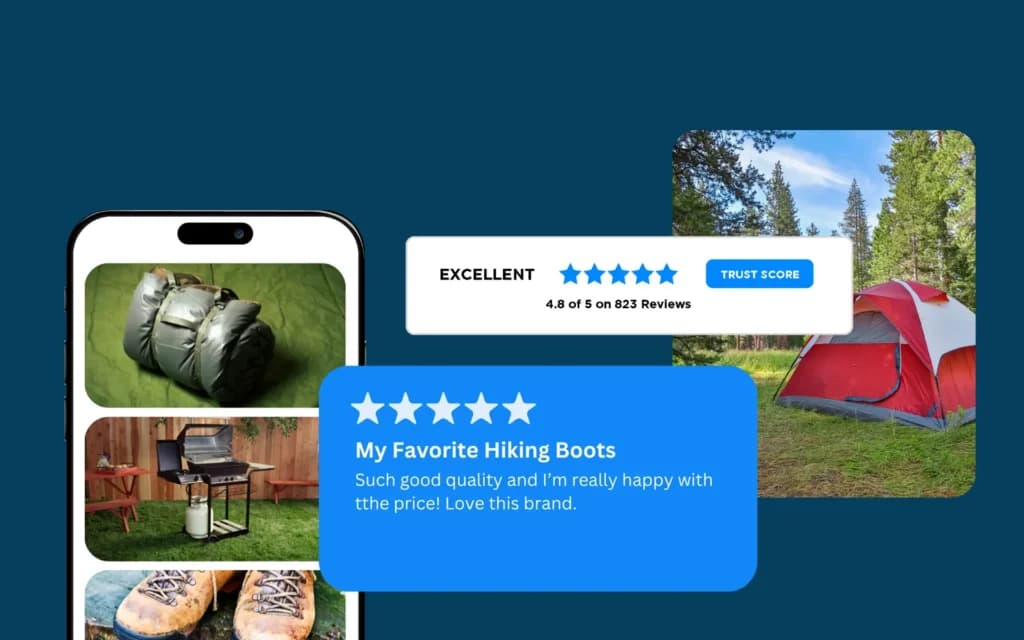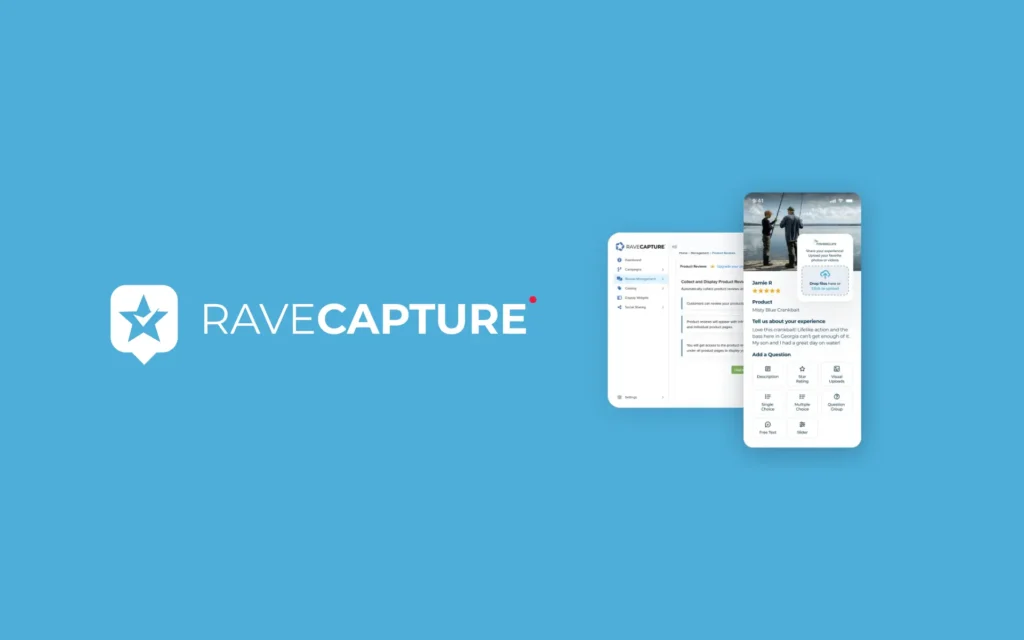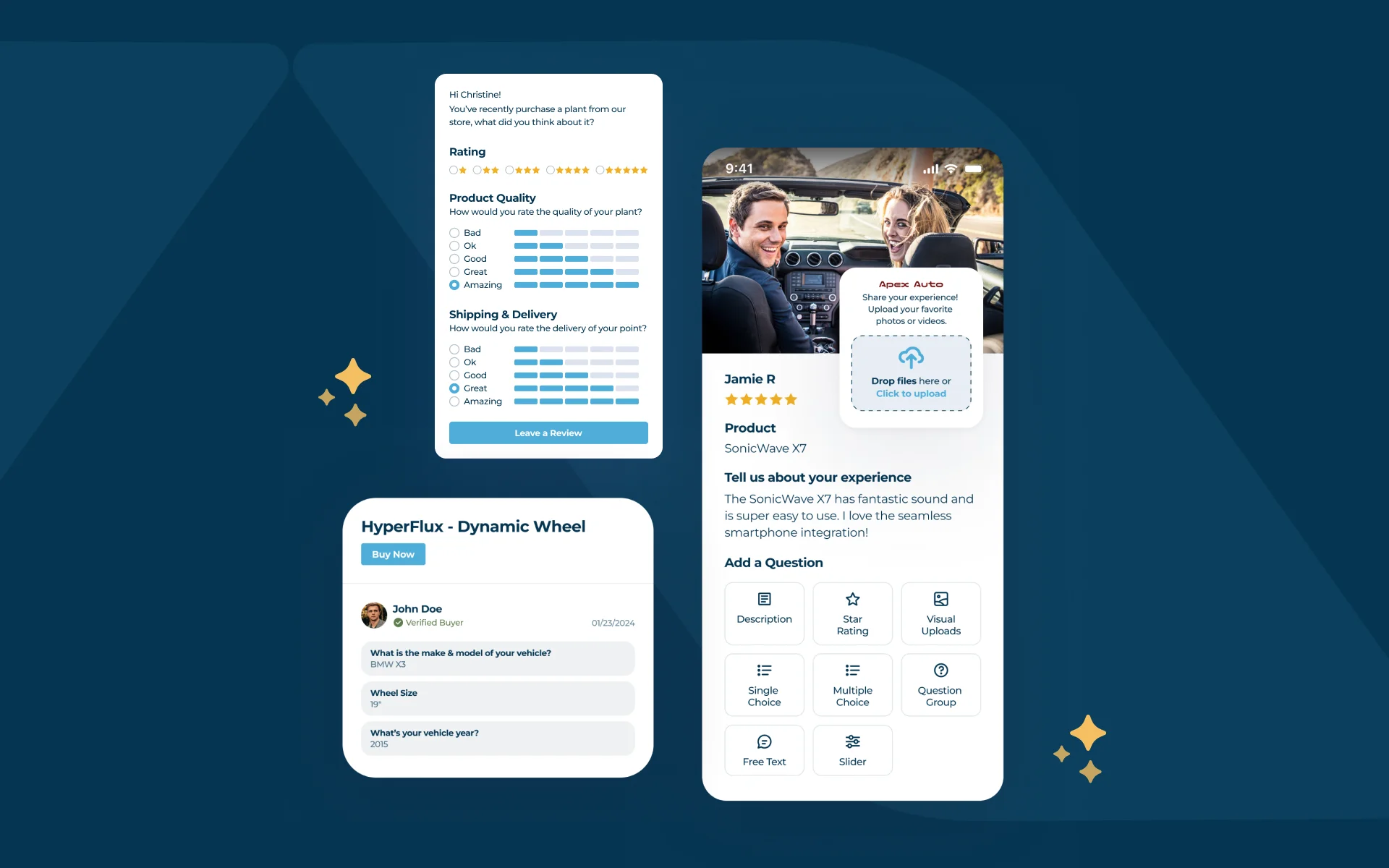Resources
Insights & Resources
Read the latest insights on ecommerce growth, review strategies, and customer feedback best practices from the RaveCapture team.
25 articles found

The Psychology Behind Star Ratings: Why Customers Choose Each Rating Level
Understand the psychology behind star ratings and how they shape buyer trust. Learn how to encourage better reviews without manipulation.

Google Reviews vs. Site Reviews: Understanding What Your Business Needs
Discover the key differences between Google Reviews and site reviews, how they complement each other, and actionable strategies for building a complete review strategy that drives visibility and conversions.

Star Rating Calculator: How Many Reviews to Reach 4.5 Stars
Calculate exactly how many 5-star reviews you need to reach 4.5 stars, plus proven strategies to improve your ratings and drive more conversions.

5 Product Review Request Email Templates (Free & Customizable)
Copy and customize these 5 proven product review request email templates to boost your review collection rates and gather authentic customer feedback for your ecommerce store.

eCommerce Email Marketing Trends in 2025 and Beyond
Discover the top ecommerce email marketing trends for 2025, from AI-driven personalization to interactive content and sustainable practices that drive conversions and customer loyalty.

8 Ways to Add Testimonials and Reviews to Your Website
Discover 8 proven methods to display customer testimonials and reviews on your ecommerce site. From product page reviews to UGC galleries, boost trust and conversions with social proof.

How to Add Trust Badges to Your Shopify Store
Learn how to add trust badges to your Shopify store manually or with apps. Step-by-step guide to increase conversions, reduce cart abandonment, and build customer confidence.

10 Ecommerce Trends for 2025 and Beyond
Discover the 10 major ecommerce trends shaping 2025 and beyond, from AI-powered customer interactions to sustainability drivers and mobile-first shopping experiences.

Review Incentives: What's Allowed and What Actually Works
Navigate the complex landscape of review incentives with this comprehensive guide to legal, ethical, and effective strategies for encouraging customer feedback.

UGC Reviews: The Ultimate Guide for Ecommerce Businesses
Learn how to collect, showcase, and leverage user-generated content reviews to build trust, increase conversions, and grow your ecommerce brand with authentic customer feedback.

12 Review Request Email Examples (Free Templates)
Copy and customize these 12 proven review request email templates to boost your response rates and collect more authentic customer feedback.

The Hidden Cost of Low Star Ratings
Discover the real impact of low star ratings on your bottom line, from lost conversions to reduced organic visibility, and learn how to recover.

10 Best Tools to Collect User-Generated Content After Purchase
Compare the 10 best UGC collection tools for ecommerce, from free options like Google Forms to advanced platforms like RaveCapture. Find the right fit for your budget and needs.

What is an Experience Survey: Unveiling Customer Insights
Discover how experience surveys unlock valuable customer insights. Learn about survey types, best practices, and how to leverage feedback to improve your ecommerce business.

Review Generation vs. Review Gating: What's Legal and What Works
Understand the critical differences between review generation and review gating, and learn which strategies comply with platform policies and consumer protection laws.

How Product Reviews Boost Google Shopping Ads
Learn how to leverage product reviews and star ratings in Google Shopping ads to increase click-through rates and lower your cost per acquisition.

What's a Good Response Rate for Reviews?
Discover industry benchmarks for review response rates and learn proven tactics to increase the percentage of customers who leave feedback after purchase.

10 Must-Have Ecommerce Trust Badges to Boost Your Store's Credibility
Discover the most effective trust badges for ecommerce stores and learn how to strategically display them to increase conversions and reduce cart abandonment.

Best Customer Experience Survey Questions for 2024
Discover 10 essential customer experience survey questions that drive actionable insights. Learn how to collect valuable feedback, measure NPS, and improve customer satisfaction.

7 Tips for Creating Valuable Customer Experience Surveys
Learn how to design customer experience surveys that generate actionable insights. Discover 7 proven tips for timing, customization, and collecting valuable feedback.

5 Strategies for Responding to Negative Reviews (With Examples)
Master the art of responding to negative reviews with these five proven strategies and real-world examples that turn unhappy customers into brand advocates.

The Legal Side of Customer Reviews: Best Practices for Ecommerce Compliance
Stay compliant with consumer protection laws, FTC guidelines, and platform policies while building a robust review program for your ecommerce store.

5 Hunting Marketing Ideas to Try in 2024
Discover five proven marketing strategies for hunting and outdoor brands, from user-generated content to influencer partnerships, that can elevate your brand and drive customer engagement.

Brand Voice Guide for Review Responses: Building Authentic Customer Interactions
Develop a consistent, authentic brand voice for your review responses that strengthens customer relationships and reinforces your brand identity.

Top 7 Marketing Agencies for Outdoor Brands
Discover the top 7 marketing agencies specializing in outdoor brands. From hunting and fishing to adventure sports, these agencies help outdoor ecommerce brands grow.